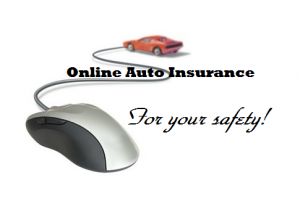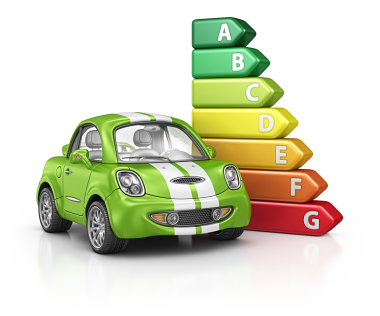Virginia Car Insurance online guide

1. Introduction
When it comes to car insurance, Virginia follows a traditional fault-based system, meaning the driver at fault is responsible for covering the damages. To legally operate a vehicle in Virginia, you must have a minimum level of car insurance coverage. However, it’s important to note that these minimum requirements might not provide sufficient protection in certain scenarios.
2. Understanding Car Insurance
Car insurance is a contract between you and an insurance company that protects you financially in case of accidents, theft, or other damages. Before delving into the intricacies of car insurance, let’s explore the different types of coverage available:
2.1 Types of Car Insurance
Liability coverage – This coverage helps pay for damages you cause to others’ property or injuries to other people in an accident.
Collision coverage – It covers the repairs or replacement of your vehicle if you collide with another vehicle or object.
Comprehensive coverage – This coverage protects your vehicle against non-collision-related damages such as theft, vandalism, or natural disasters.
2.2 Minimum Coverage Requirements
In Virginia, the minimum car insurance coverage requirements are as follows:
$25,000 bodily injury liability coverage per person
$50,000 bodily injury liability coverage per accident
$20,000 property damage liability coverage per accident
However, it’s advisable to consider higher coverage limits to adequately protect yourself and your assets.
How to find the cheapest rates for Virginia auto insurance?
Steps By Step Procedure To Choose Car Insurance
3. Factors Affecting Car Insurance
When determining your car insurance premium, insurance providers consider various factors that help them assess the risk associated with insuring you. Understanding these factors can empower you to make informed decisions and potentially lower your insurance costs.
3.1 Driving Record
Your driving record plays a significant role in determining your car insurance premium. Drivers with a clean record and no history of accidents or traffic violations are typically rewarded with lower rates.
3.2 Age and Gender
Statistically, certain age groups and genders have different risk profiles when it comes to driving. Younger and inexperienced drivers, particularly teenagers, are considered higher risk due to their limited driving experience. Similarly, male drivers tend to be associated with higher accident rates compared to female drivers. However, it’s important to note that individual driving habits and records should always be the primary factor in determining insurance premiums.
3.3 Vehicle Type
The type of vehicle you drive can also influence your car insurance rates. Factors such as the make, model, year, and safety features of your vehicle can impact the potential cost of repairs or replacement in the event of an accident. Generally, vehicles with advanced safety features and lower theft rates may qualify for lower insurance premiums.
3.4 Location
Where you live and park your vehicle also affects your car insurance rates. Urban areas with higher traffic congestion and theft rates may result in higher premiums compared to rural areas. Additionally, certain neighborhoods or areas prone to severe weather conditions might increase the risk of accidents or vehicle damage, impacting insurance costs.
4. Finding the Right Car Insurance
To find the right car insurance policy that meets your specific needs, it’s essential to engage in thorough research and comparison shopping. Here are some steps to help you navigate the process:
4.1 Comparison Shopping
Obtain quotes from multiple insurance providers to compare coverage options and premiums. Take into account the reputation and financial stability of the companies, as well as the specific coverage and deductibles offered.
4.2 Evaluating Coverage Options
Carefully review the coverage options available, considering your personal circumstances and requirements. Ensure that the policy covers both property damage and bodily injury liability, as well as comprehensive and collision coverage if necessary.
4.3 Customer Reviews
Research customer reviews and feedback regarding insurance providers you are considering. This can provide insights into the company’s customer service, claims process, and overall satisfaction levels among policyholders.
5. Obtaining Car Insurance Quotes
Gathering car insurance quotes is an important step in the process of securing the right coverage at the best possible price. Consider the following when obtaining quotes:
5.1 Online Insurance Providers
Many insurance companies offer online platforms that allow you to request quotes conveniently. Utilize these platforms to compare multiple quotes from different providers efficiently.
5.2 Required Information
Prepare the necessary information before requesting quotes. This may include your personal details, vehicle information, driving history, and any additional drivers to be included on the policy.
5.3 Obtaining Multiple Quotes
To ensure you’re getting the most competitive rates, obtain quotes from at least three different insurance providers. This allows you to compare coverage options and premiums effectively.
6. Car Insurance Terms
To navigate the world of car insurance effectively, it’s crucial to understand key terms and concepts. Here are some essential terms to familiarize yourself with:
6.1 Premium
The premium is the amount you pay to the insurance company in exchange for coverage. It is typically paid on a monthly or annual basis.
6.2 Deductible
The deductible is the amount you must pay out of pocket before your insurance coverage kicks in. A higher deductible often results in lower premium costs, but it means you will bear a larger portion of the expenses in the event of a claim.
6.3 Coverage Limits
Coverage limits refer to the maximum amount an insurance company will pay for a covered claim. It’s crucial to review and understand the specific coverage limits outlined in your policy to ensure adequate protection.
7. Discounts and Savings
Insurance providers often offer various discounts that can help you save money on your car insurance premiums. Take advantage of these opportunities to reduce your costs:
7.1 Good Driver Discount
If you have a clean driving record with no accidents or traffic violations, you may qualify for a good driver discount. Insurance companies reward safe drivers with lower premiums as they are considered lower risk.
7.2 Multi-Policy Discount
By bundling multiple insurance policies, such as car and homeowner’s insurance, with the same provider, you may be eligible for a multi-policy discount. This can lead to significant savings on your premiums.
7.3 Safety Features Discount
If your vehicle is equipped with safety features such as anti-lock brakes, airbags, or an anti-theft system, you may qualify for a safety features discount. These features reduce the risk of accidents or theft, making your vehicle safer and potentially lowering your premiums.
8. Filing a Car Insurance Claim
In the unfortunate event of an accident or damage to your vehicle, understanding the process of filing a car insurance claim is crucial. Follow these steps to navigate the claims process effectively:
8.1 Reporting an Accident
Promptly report the accident to your insurance provider, providing accurate and detailed information about the incident. This includes the date, time, location, and any other relevant details.
8.2 Documentation
Document the damage by taking photographs and collecting witness statements if possible. Keep track of any medical bills, repair estimates, or other expenses related to the accident. This documentation will be essential when filing your claim.
8.3 Claims Process
Contact your insurance company to initiate the claims process. A claims adjuster will evaluate the damages and determine the coverage and reimbursement amount. Follow their instructions and provide the necessary documentation to ensure a smooth and timely resolution.
9. Conclusion
Navigating the world of car insurance in Virginia can be complex, but with the right knowledge and understanding, you can make informed decisions that protect you and your vehicle. Remember to compare quotes, consider your specific needs, and familiarize yourself with key terms and discounts. In the event of an accident, knowing how to file a claim efficiently will help you get back on the road with minimal hassle.
10. Frequently Asked Questions
Q1. How can I lower my car insurance premiums in Virginia?
There are several ways to lower your car insurance premiums in Virginia. Maintain a clean driving record, consider raising your deductible, take advantage of discounts, and compare quotes from multiple insurance providers.
Q2. What factors determine my car insurance rates in Virginia?
Car insurance rates in Virginia are determined by factors such as your driving record, age, gender, vehicle type, location, and coverage limits.
Q3. Can I drive without car insurance in Virginia?
No, it is illegal to drive without car insurance in Virginia. You must carry at least the minimum required coverage to legally operate a vehicle.
Q4. How often should I review my car insurance policy?
It is recommended to review your car insurance policy annually or whenever there are significant changes in your circumstances, such as purchasing a new vehicle or moving to a different location.
Q5. What should I do if my insurance claim is denied?
If your insurance claim is denied, you can appeal the decision or seek assistance from your state’s insurance regulatory agency.
Resource: Vehicle insurance in the United States https://en.wikipedia.org/wiki/Vehicle_insurance_in_the_United_States




